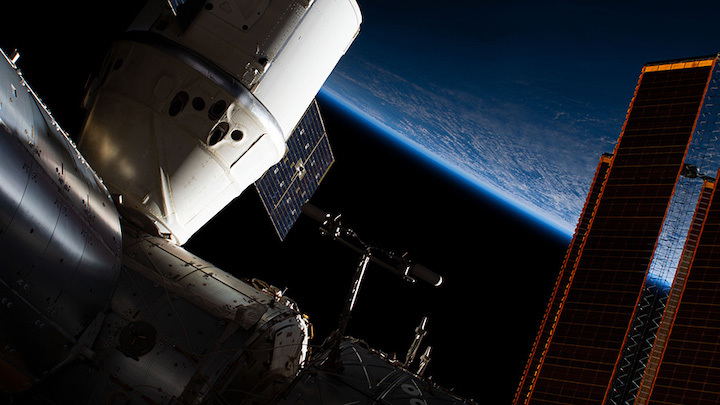The SpaceX Dragon cargo craft had its stay extended at the International Space Station a few more days. Mission managers observed inclement weather at Dragon’s splashdown site in the Pacific Ocean and decided against Dragon’s return to Earth today.
Meanwhile, Dragon’s hatch remains open and the Expedition 58 crew is tending to time-sensitive experiments targeted for return and analysis back on Earth. The Canadarm2 robotic arm has the Dragon firmly in its grips while the cargo vehicle is still attached to the Harmony module.
Robotics controllers will command the Canadarm2 to uninstall Dragon from Harmony on Saturday afternoon then slowly maneuver the U.S. space freighter to its release position. The Canadarm2 will then be commanded to release Dragon Sunday at 3:36 a.m. EST as astronaut Anne McClain monitors from the cupola. NASA TV will broadcast the departure live without commentary starting Sunday at 3:15 a.m.
Today, the three space station residents are back on science and maintenance duties with Dragon poised for a weekend departure. McClain of NASA is checking out and preserving the space research meant for return inside Dragon.
Flight Engineer David Saint-Jacques of the Canadian Space Agencyassisted McClain first thing Thursday morning. He then moved on to the Vascular Echo study scanning his leg’s femoral artery with an ultrasound device to understand how living in space affects the cardiovascular system.
Cosmonaut Oleg Kononenko explored ways to improve piloting techniques in space and participated in a psychological assessment. The four-time station resident also maintained Russian life support systems aboard the orbital lab.
Back on Earth, NASA and SpaceX are continuing to work on the activities leading toward the Demo-1, uncrewed flight test to the International Space Station. NASA and SpaceX are now targeting no earlier than February for the launch of Demo-1 to complete hardware testing and joint reviews. NASA and SpaceX will confirm a new target date after coordination with the Eastern Range and the International Space Station Program.


